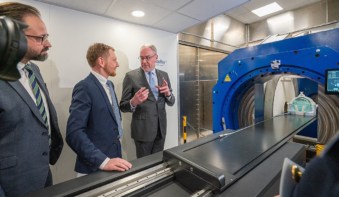Max Perutz, who has died at the age of 87, was one of the group of brilliant scientists who founded the subject of molecular biology while working at the Cavendish Laboratory in Cambridge. Perutz shared the Nobel Prize for Chemistry in 1962 with John Kendrew ‘for their studies of the structures of globular proteins’. Perutz is most famous for determining the structure of haemoglobin.
Max Perutz was born in Vienna in 1914 and studied chemistry at the local university. He moved to the Cavendish in 1936 to work on a PhD with the noted crystallographer J D Bernal.
When Hitler invaded Austria, Perutz decided to remain in the UK and spent the rest of his career at Cambridge. He later worked as a research assistant under Sir Lawrence Bragg, and in 1947 was made head of the new Medical Research Council Unit for Molecular Biology. Perutz’s lab went on to become one of the world’s foremost molecular biology laboratories.
Perutz’s prize-winning research involved protein chemistry work at the Molteno Institute in Cambridge and X-ray analysis at the Cavendish. The Nobel Foundation website describes Perutz ‘busily bridging the gap between biology and physics on his bicycle.’ Perutz continued to be active in research long after he retired, publishing more than 100 papers during this period. Once asked why he didn’t retire, Perutz said that he was ‘tied up in some very interesting research at the time.’
Other researchers at the Cavendish who went on to find fame in molecular biology and receive the Nobel Prize in chemistry or medicine include Francis Crick, Aaron Klug, Fred Sanger and James Watson.



